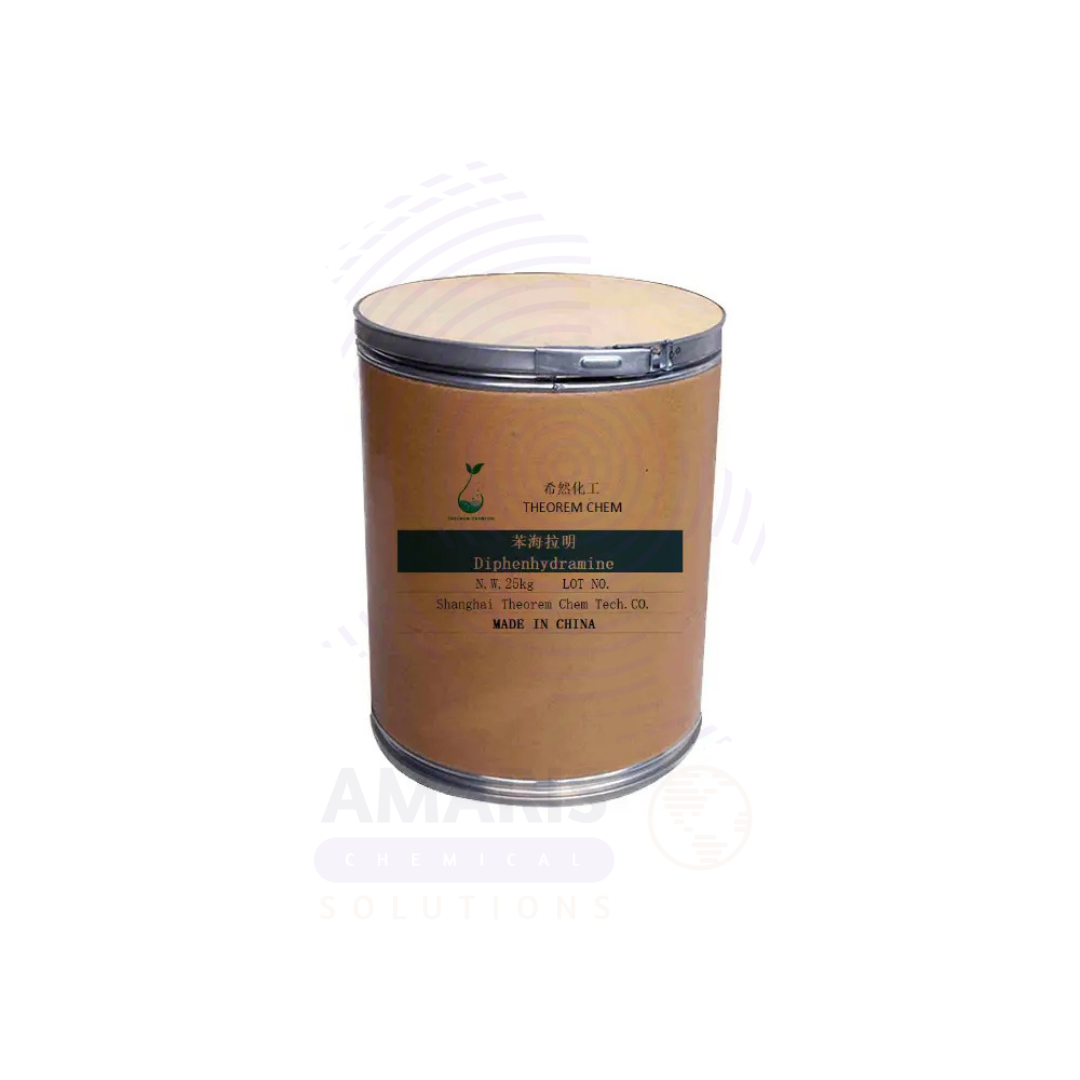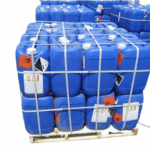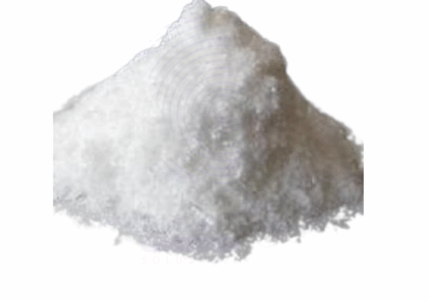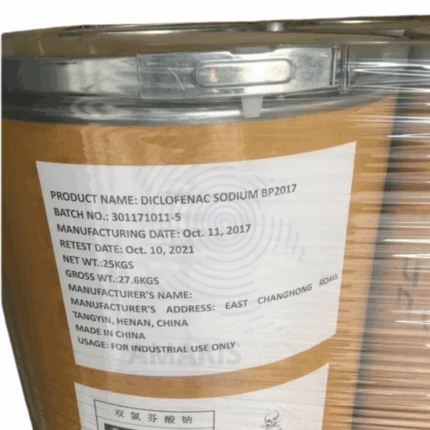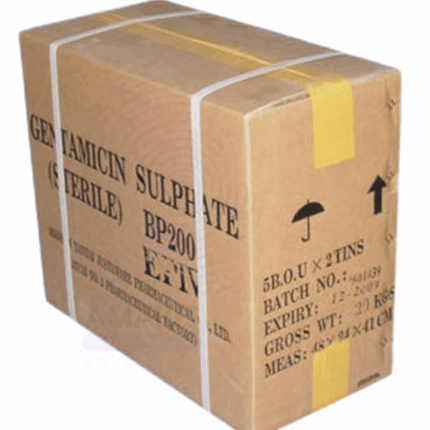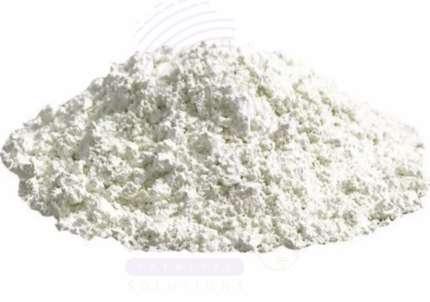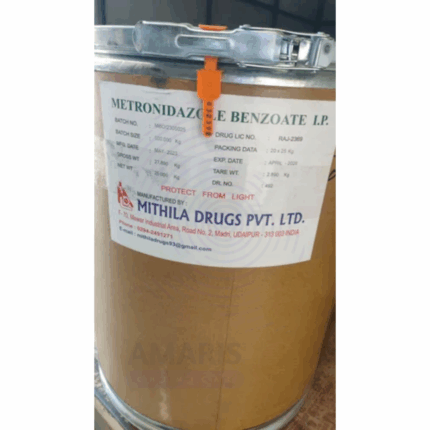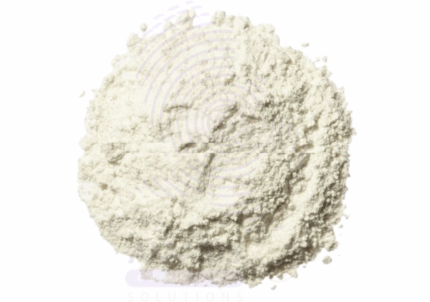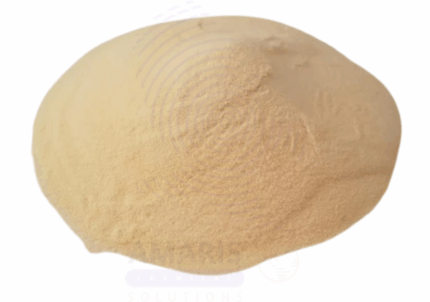Diphenhydramine HCL BP
Diphenhydramine HCL BP is a first-generation antihistamine with potent anticholinergic, sedative, and antiemetic properties. It is commonly used to relieve symptoms associated with allergies, hay fever, the common cold, and motion sickness. Diphenhydramine HCL is a white crystalline powder, highly soluble in water, making it suitable for oral, topical, and injectable pharmaceutical formulations. Due to its ability to cross the blood-brain barrier, it causes sedation and is often used as a sleep aid and for managing Parkinson’s disease symptoms.
Diphenhydramine HCL BP
Primary Uses
- Pharmaceuticals – Allergy Treatment
- Used as an antihistamine to treat allergic reactions including rhinitis, urticaria, and pruritus.
- Effective in relieving symptoms such as sneezing, runny nose, itching, and watery eyes.Sleep Aid & Sedative
- Commonly formulated in over-the-counter (OTC) sleep aids for short-term treatment of insomnia.
- Employed for its sedative effect in preoperative medication to reduce anxiety and induce drowsiness.Motion Sickness & Nausea
- Used in oral and injectable forms to prevent and treat nausea, vomiting, and dizziness caused by motion sickness or vertigo.Parkinsonism and Extrapyramidal Symptoms
- Helps reduce tremors and muscle stiffness associated with Parkinson’s disease and drug-induced extrapyramidal symptoms.Topical Applications
- Used in topical creams, gels, and sprays for its local anesthetic and antipruritic effects to relieve insect bites, minor burns, and skin irritations.
Secondary Uses
- Cough Suppressants
- Included in some cough and cold formulations for its sedative and mild antitussive properties.Anesthetic Adjunct
- Occasionally used in combination with other drugs for local anesthesia potentiation due to its anticholinergic effects.Treatment of Allergic Conjunctivitis
- Utilized in ophthalmic formulations to relieve itching and redness caused by allergic conjunctivitis.
1. Basic Identification Attributes
- Chemical Name (IUPAC): 2-(Diphenylmethoxy)-N,N-dimethylethanamine hydrochloride
- Common/Trade Name: Diphenhydramine Hydrochloride, Diphenhydramine HCL
- CAS Number: 147-24-0
- HS Code: 2933.39.00
- Molecular Formula: C17H21NO·HCl
- Synonyms:
- Diphenhydramine HCL
- Diphenhydramine hydrochloride
- Benadryl (common brand)
2. Physical & Chemical Properties
- Physical State: White crystalline powder
- Odor: Odorless or faint characteristic odor
- Melting Point: 165–168°C (decomposes)
- Solubility: Freely soluble in water, ethanol; slightly soluble in chloroform
- Stability: Stable under normal storage conditions; sensitive to light and moisture
3. Safety & Hazard Attributes
- Hazard Class (GHS): Not classified as hazardous under normal handling
- Toxicity: Low acute toxicity; overdose may cause severe sedation or anticholinergic toxicity
- Exposure Limits: No specific occupational exposure limit established
4. Storage & Handling Attributes
- Storage Conditions: Store in a cool, dry, well-ventilated place, protected from light and moisture
- Container Type: Sealed HDPE or glass containers to prevent moisture ingress
- Shelf Life: Typically 2–3 years if stored properly
- Handling Precautions: Avoid dust inhalation; use PPE to prevent eye and skin contact
5. Regulatory & Compliance Attributes
- Listed in pharmacopeias such as BP, USP, EP
- Approved for use in pharmaceuticals worldwide under controlled dosages
- Subject to prescription and OTC regulations depending on jurisdiction
6. Environmental & Health Impact
- Ecotoxicity: Low toxicity to aquatic life at environmental concentrations
- Persistence: Biodegradable under typical wastewater treatment
- Bioaccumulation: Not expected
- Carcinogenicity/Mutagenicity: Not classified as carcinogenic or mutagenic
Safety Handling Precautions
PPE Required:
- Dust mask or respirator (for powder handling)
- Safety goggles
- Gloves (nitrile or latex)
- Lab coat or protective apron
Handling Guidelines:
- Handle in well-ventilated areas
- Avoid creating dust and inhalation exposure
- Use non-metallic tools to prevent contamination
- Wash hands thoroughly after handling
Storage Measures:
- Keep container tightly closed
- Store away from moisture and direct sunlight
- Avoid exposure to high temperatures
Hygiene Practices:
- Do not eat, drink, or smoke while handling
- Use clean areas to prevent cross-contamination
- Remove contaminated clothing promptly
First Aid Measures
- Inhalation: Move to fresh air; if symptoms such as dizziness or headache occur, seek medical advice
- Skin Contact: Wash affected area with soap and water; consult physician if irritation develops
- Eye Contact: Rinse eyes with plenty of water for at least 15 minutes; seek medical attention if irritation persists
- Ingestion: Seek immediate medical attention; do not induce vomiting unless directed by medical personnel
Firefighting Measures
- Fire Hazards: Combustible material; may burn under fire conditions
- Extinguishing Media: Use water spray, dry chemical, foam, or CO₂ to extinguish fire
- Special Precautions: Firefighters should wear self-contained breathing apparatus (SCBA)
- Decomposition Products: Carbon monoxide, carbon dioxide, nitrogen oxides on combustion
Related products
Carbocisteine AJI 92
Diclofenac Sodium BP
Gentamycin Sulphate
Mepyramine Maleate BP
Metronidazole Benzoate BP
Miconazole Nitrate BP
Miconazole Nitrate BP is a high-purity, pharmaceutical-grade antifungal agent conforming to British Pharmacopoeia (BP) specifications. It is widely used in the formulation of topical and oral pharmaceutical products for the treatment of fungal infections caused by dermatophytes and yeasts, including Candida species. Miconazole Nitrate functions by inhibiting the biosynthesis of ergosterol, a vital component of fungal cell membranes, leading to cell death.
This white to off-white crystalline powder is highly effective and exhibits broad-spectrum antifungal and some antibacterial activity. It is commonly utilized in creams, ointments, powders, and gel formulations.


 Preservatives(food)
Preservatives(food) Flavor Enhancers
Flavor Enhancers Acidulants
Acidulants Sweeteners
Sweeteners Antioxidants
Antioxidants Colorants(food)
Colorants(food) Nutraceutical Ingredients (food)
Nutraceutical Ingredients (food) Nutrient Supplements
Nutrient Supplements Emulsifiers
Emulsifiers
 Collectors
Collectors Dust Suppressants
Dust Suppressants Explosives and Blasting Agents
Explosives and Blasting Agents Flocculants and Coagulants
Flocculants and Coagulants Frothers
Frothers Leaching Agents
Leaching Agents pH Modifiers
pH Modifiers Precious Metal Extraction Agents
Precious Metal Extraction Agents
 Antioxidants(plastic)
Antioxidants(plastic) Colorants (Pigments, Dyes)
Colorants (Pigments, Dyes) Fillers and Reinforcements
Fillers and Reinforcements Flame Retardants
Flame Retardants Monomers
Monomers Plasticizers
Plasticizers Polymerization Initiators
Polymerization Initiators Stabilizers (UV, Heat)
Stabilizers (UV, Heat)
 Antifoaming Agents
Antifoaming Agents Chelating Agents
Chelating Agents Coagulants and Flocculants
Coagulants and Flocculants Corrosion Inhibitors
Corrosion Inhibitors Disinfectants and Biocides
Disinfectants and Biocides Oxidizing Agents
Oxidizing Agents pH Adjusters
pH Adjusters Scale Inhibitors( water)
Scale Inhibitors( water)
 Antioxidants(cosmetic)
Antioxidants(cosmetic) Emollients
Emollients Fragrances and Essential Oils
Fragrances and Essential Oils Humectants
Humectants Preservatives
Preservatives Surfactants(cosmetic)
Surfactants(cosmetic) Thickeners
Thickeners UV Filters
UV Filters
 Fertilizers
Fertilizers Soil Conditioners
Soil Conditioners Plant Growth Regulators
Plant Growth Regulators Animal Feed Additives
Animal Feed Additives Biostimulants
Biostimulants Pesticides (Herbicides, Insecticides, Fungicides)
Pesticides (Herbicides, Insecticides, Fungicides)
 Active Pharmaceutical Ingredients (APIs)
Active Pharmaceutical Ingredients (APIs) Excipients
Excipients Solvents(pharmaceutical)
Solvents(pharmaceutical) Antibiotics
Antibiotics Antiseptics and Disinfectants
Antiseptics and Disinfectants Vaccine Adjuvants
Vaccine Adjuvants Nutraceutical Ingredients (pharmaceutical)
Nutraceutical Ingredients (pharmaceutical) Analgesics & Antipyretics
Analgesics & Antipyretics
 Analytical Reagents
Analytical Reagents Solvents(lab)
Solvents(lab) Chromatography Chemicals
Chromatography Chemicals Spectroscopy Reagents
Spectroscopy Reagents microbiology-and-cell-culture-reagents
microbiology-and-cell-culture-reagents Molecular Biology Reagents
Molecular Biology Reagents Biochemical Reagents
Biochemical Reagents Inorganic and Organic Standards
Inorganic and Organic Standards Laboratory Safety Chemicals
Laboratory Safety Chemicals Specialty Laboratory Chemicals(Special Laboratory Equipment)
Specialty Laboratory Chemicals(Special Laboratory Equipment)
 Demulsifiers
Demulsifiers Hydraulic Fracturing Fluids
Hydraulic Fracturing Fluids Scale Inhibitors(oil)
Scale Inhibitors(oil) Surfactants(oil)
Surfactants(oil) Drilling Fluids
Drilling Fluids
 Dyes and Pigments
Dyes and Pigments Bleaching Agents
Bleaching Agents Softening Agents
Softening Agents Finishing Agents
Finishing Agents Antistatic Agents
Antistatic Agents
 Admixtures
Admixtures Waterproofing Agents
Waterproofing Agents Sealants and Adhesives
Sealants and Adhesives Curing Compounds
Curing Compounds Concrete Repair Chemicals
Concrete Repair Chemicals Anti-Corrosion Coatings
Anti-Corrosion Coatings
 Surfactants(cleaning)
Surfactants(cleaning) Builders
Builders Enzymes
Enzymes Solvents (Cleaning)
Solvents (Cleaning) Fragrances
Fragrances
 Electronic Chemicals
Electronic Chemicals Catalysts
Catalysts Lubricants
Lubricants Photographic Chemicals
Photographic Chemicals Refrigerants
Refrigerants Automotive chemicals
Automotive chemicals Pyrotechnic Chemicals
Pyrotechnic Chemicals
 Biodegradable Surfactants
Biodegradable Surfactants Bio-based Solvents
Bio-based Solvents Renewable Polymers
Renewable Polymers Carbon Capture Chemicals
Carbon Capture Chemicals Wastewater Treatment Chemicals
Wastewater Treatment Chemicals
 Pigments
Pigments Solvents(paint)
Solvents(paint) Specialty Coatings
Specialty Coatings Binders/Resins
Binders/Resins Additives
Additives Driers
Driers Anti-Corrosion Agents
Anti-Corrosion Agents Functional Coatings
Functional Coatings Application-Specific Coatings
Application-Specific Coatings
 Fresh Herbs
Fresh Herbs Ground Spices
Ground Spices Whole Spices
Whole Spices Spice Blends
Spice Blends Dried Herbs
Dried Herbs
 Leavening Agents
Leavening Agents Dough Conditioners
Dough Conditioners Flour Treatments
Flour Treatments Fat Replacers
Fat Replacers Decoratives
Decoratives Preservatives(baking)
Preservatives(baking)
 Plasticizers & Softeners
Plasticizers & Softeners Reinforcing Agents
Reinforcing Agents Adhesion Promoters
Adhesion Promoters Vulcanizing Agents
Vulcanizing Agents Antidegradants
Antidegradants Blowing Agents
Blowing Agents Fillers & Extenders
Fillers & Extenders Accelerators & Retarders
Accelerators & Retarders